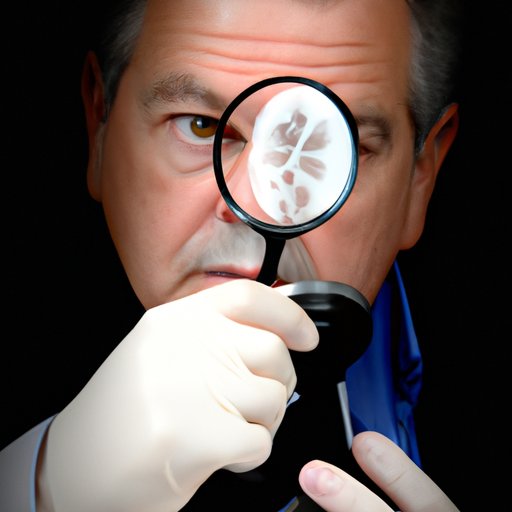Introduction
Forensic science is a branch of science that applies scientific knowledge to criminal investigations and proceedings. It involves the collection and analysis of evidence to help solve crimes, such as murder and theft. Forensic science can range from basic fingerprinting to complex DNA analysis.
The term “forensic” comes from the Latin word “forensis,” meaning “of or before the forum.” In ancient Rome, the forum was where legal matters were discussed and debated. Today, forensic science is used in many areas of investigation, including criminal justice, civil litigation, and medical research.
Forensic science has become increasingly important in the modern world. The use of technology, such as DNA analysis, has revolutionized crime-solving capabilities. Forensic science has also been used to prove innocence in cases where the accused had previously been found guilty.

The Role of Forensic Science in Law Enforcement
Forensic science plays a vital role in law enforcement. By analyzing physical evidence, forensic scientists are able to determine facts about a crime scene, identify suspects, and reconstruct events that occurred at the scene. This information can be used to support or refute theories about how a crime was committed.
Forensic scientists use a wide variety of tools and techniques to analyze evidence. For example, they may use microscopes to examine fibers or hairs, chemical tests to detect trace elements, and spectroscopy to analyze blood stains. Through their work, forensic scientists are able to provide valuable information that can help law enforcement officers solve crimes.
According to Dr. Barry Fisher, director of the Los Angeles County Sheriff’s Department Crime Laboratory, “Forensic science has been instrumental in helping us solve cases that would have otherwise gone unsolved. It has enabled us to bring closure to victims and their families, and it has helped to ensure that justice is served.”
Investigating the History and Evolution of Forensic Science
The use of forensic science dates back to ancient times. In 1248, Chinese investigators used fingerprints to establish the identity of documents and clay sculptures. In 1686, Italian physician Francesco Redi used maggots to demonstrate that putrefaction was caused by eggs laid by flies. These early examples of forensic science laid the foundation for modern investigative techniques.
In the 19th century, advances in chemistry, biology, and microscopy made it possible to analyze minute traces of evidence. In 1835, French police officer Alphonse Bertillon developed the first system of anthropometry, which is the use of body measurements to identify individuals. In 1892, British police officer Edward Henry developed the first systematic method of fingerprint classification.
In the 20th century, forensic science continued to evolve. In the 1950s, American chemist James Watson and British biologist Francis Crick discovered the structure of DNA, a breakthrough that revolutionized forensic science. Since then, scientists have developed sophisticated methods of analyzing and comparing DNA samples.

Exploring the Different Types of Forensic Science
Forensic science encompasses a wide range of disciplines, from anthropology to psychology. Each type of forensic science has its own set of tools and techniques for analyzing evidence.
Biology is the study of living organisms. Forensic biologists use DNA analysis to identify suspects and match them to crime scenes. They also use microscopes to examine hairs, fibers, and other trace evidence.
Chemistry is the study of matter and its properties. Forensic chemists can identify and analyze drugs, poisons, and explosives. They also use chromatography to separate and identify substances.
Digital forensics is the analysis of digital evidence, such as computers and mobile devices. Computer forensics experts can recover deleted files and track down hackers.
Document examination is the analysis of handwriting and other documents. Document examiners can compare handwriting samples to identify forgery.
Psychology is the study of behavior and mental processes. Forensic psychologists can evaluate suspects and provide insight into criminal behavior.
Anthropology is the study of human culture and evolution. Forensic anthropologists can analyze skeletal remains to determine cause of death.

Examining the Latest Advances in Forensic Science
Forensic science has seen tremendous progress over the past few decades. Scientists have developed powerful new technologies that can be used to analyze evidence and identify suspects.
DNA analysis is one of the most important advances in forensic science. Using tiny samples of biological material, scientists can identify suspects with near-perfect accuracy. DNA analysis has revolutionized crime-solving capabilities and has exonerated hundreds of wrongfully convicted individuals.
3D imaging is another important advancement. 3D scanners can capture detailed images of crime scenes, allowing investigators to reconstruct events with greater accuracy. 3D imaging can also be used to create virtual mock-ups of crime scenes for training purposes.
Forensic entomology is the use of insects to investigate crimes. Insects are often present at crime scenes, and their presence can provide valuable clues about when and how a crime occurred.
Facial recognition technology is another important tool in forensic science. By comparing photographs or video footage of suspects to a database of known criminals, investigators can quickly identify potential suspects.
Conclusion
Forensic science is a rapidly evolving field that has revolutionized crime-solving capabilities. From DNA analysis to 3D imaging, forensic science has provided law enforcement with powerful tools for investigating and prosecuting criminals.
Forensic science has also had an enormous impact on society. By helping to convict criminals and exonerate innocent people, forensic science has helped to ensure that justice is served.
As technology continues to advance, forensic science will continue to play an important role in solving crimes. In the future, scientists will develop even more powerful tools and techniques for analyzing evidence and identifying suspects.
(Note: Is this article not meeting your expectations? Do you have knowledge or insights to share? Unlock new opportunities and expand your reach by joining our authors team. Click Registration to join us and share your expertise with our readers.)
